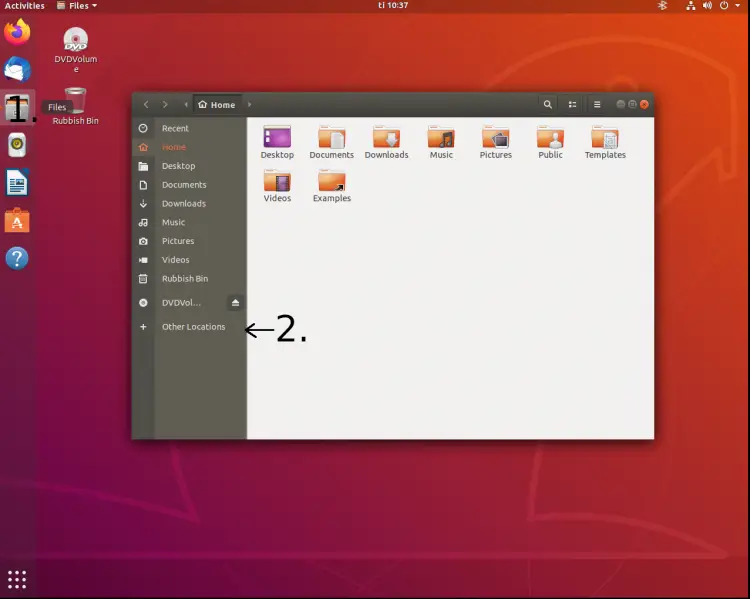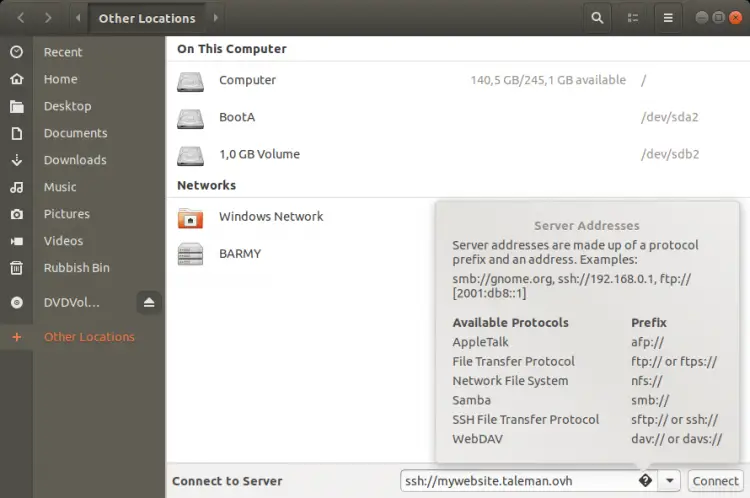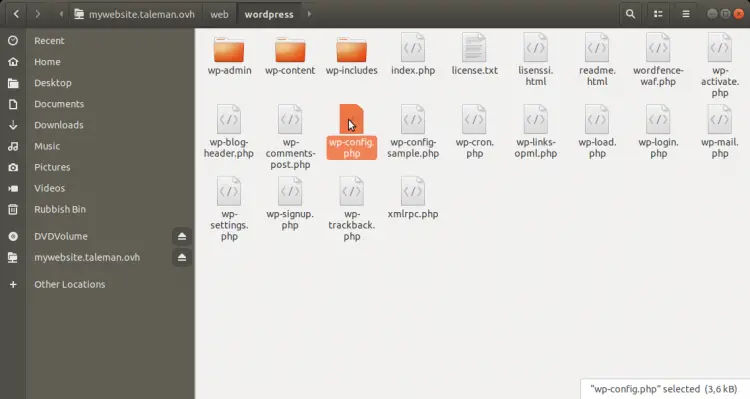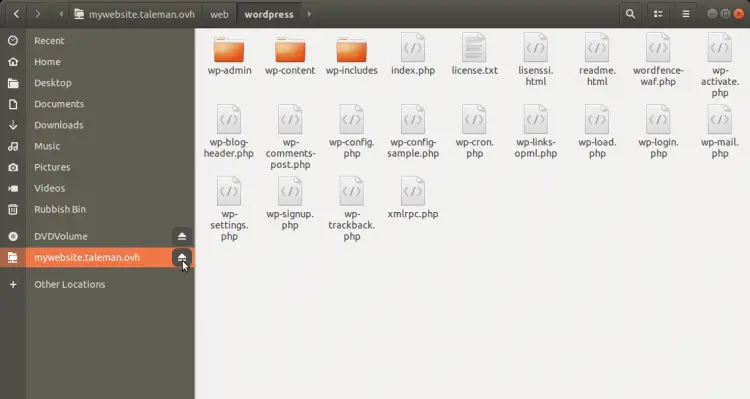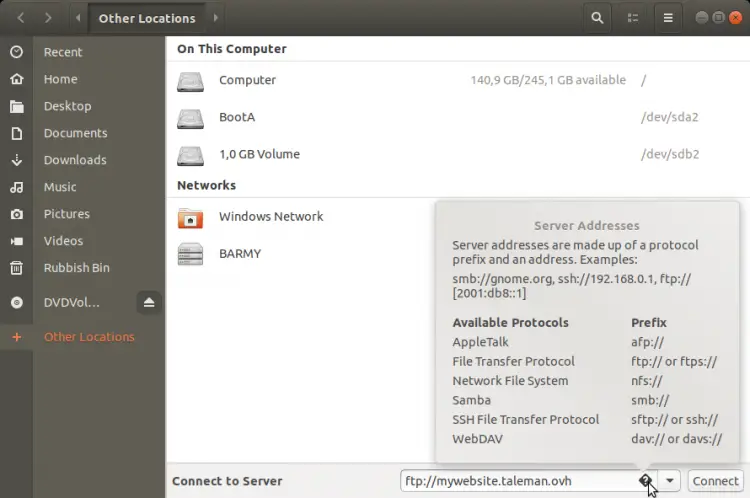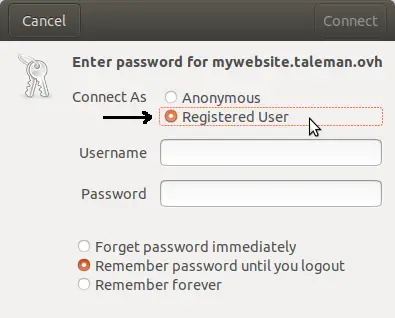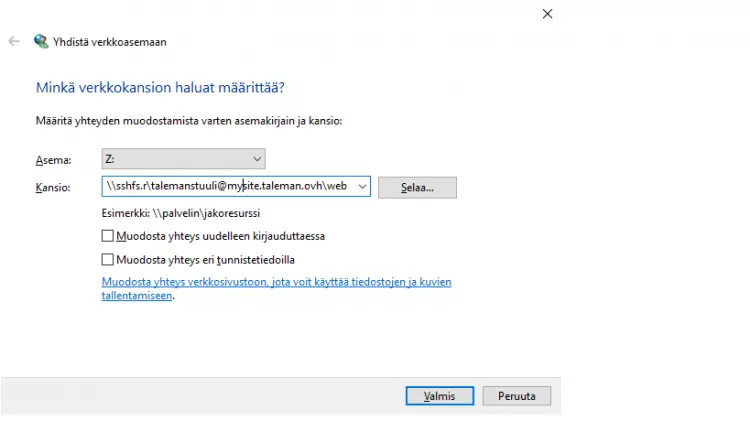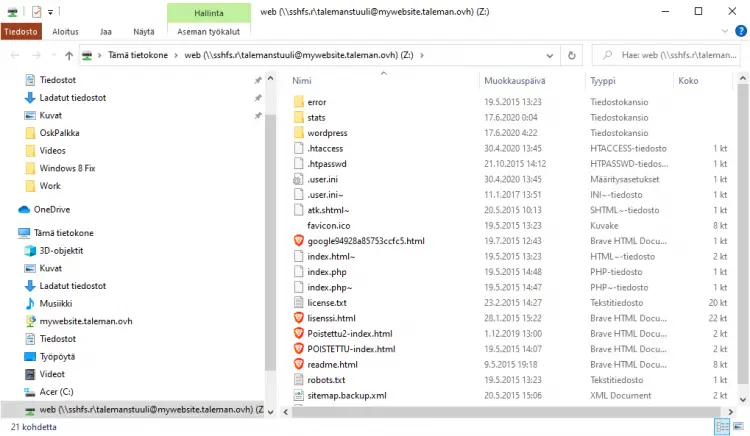Connect GNOME File Manager or Windows Explorer to an ISPConfig 3 website
This Tutorial shows how to set up access to website files in the file manager application on your workstation. This Tutorial shows this on Linux and Windows. Thanks to Sananjalka for comments and proofreading.
I have been motivated to write this Tutorial when it looked like there is much demand for integrating a file manager in ISPConfig. Since such a beast does not exist, I describe another method to accomplish similar goals.
Use file manager with ISPConfig
A workstation with a GUI has a file manager for browsing files, working with the files, and starting applications such as text editors to manipulate a file.
For SSH connections create a shell user in ISPConfig Panel. For shell users, it is better to set Chroot Shell to Jailkit creating a jailed user (see chapter Links to read more).
For FTP connections create an FTP user in ISPConfig panel.
Both shell user and FTP user is created for one website and can access files of that website and only those.
Connecting with SSH
The following is tested on Ubuntu 18.04. The screenshots below will guide you through the process. Mount the website directory on the workstation in File Manager (the Files icon on the left panel, marked with "1." in the first screenshot).
The Other Locations item (marked with "2." in the above screenshot) opens up a popup window where the connection to the remote host can be established.
Using SSH keys it is not needed to write the password. If you plan to use this connection often, it is useful to set up passwordless logins with SSH keys. See chapter Links at the end of this Tutorial.
Setup is tested with a website that happens to have WordPress installed. This would work with any CMS or plain HTML files installed on the website. Website files can be accessed with File Manager, the same way files on the workstation local disk are used.
Disconnecting the SSH mount is done in the same way as unmounting any other mount, i.e. by clicking with the mouse on the Unmount button for the mounted device.
Connecting with FTP
This works just like with SSH, except use ftp:// as the protocol in connecting to server.
For username and password, use the account info for FTP-user. For FTP connection the password must be entered, it is not possible to use passwordless login (except with anonymous FTP, but do not use that for website FTP access).
Disconnecting the FTP mount is done in the same way as for SSH mount.
For good measure, I tested also on Debian 10, works the same way. To make sure nothing extra needs to be installed, I tested both SSH and FTP connections on freshly installed default Ubuntu 20.04 facing no complications.
Windows 10
Connect by SSH
Tested on Windows 10, Winver shows 2004 19041.264.
Instructions on installing and using SSHFS on Windows are found at "SSHFS for Windows" (See chapter Links). The "Factory version" of Windows does not support SSHFS, extra components must be installed: winfsp and sshfs-win.
Read the instructions for SSHFS For Windows, first to install the necessary components and then to use the correct UNC syntax for the connection. Using \\sshfs\user@host shows only the shell user's home directory with no way to access the website files. So the correct syntax for using with ISPConfig website shell user is
\\sshfs.r\user@host\web
The screenshots are from the Finnish Language version of Windows 10.
Windows file manager shows the same website files as in previous Linux chapter:
Disconnect by clicking with the other mouse button the remote connection item on left panel, a popup shows disconnect function.
FTP
Connecting with FTP from Windows 10 File Manager proved to be the most difficult to set up and did not work very well. I followed instructions from https://www.betterhostreview.com/connect-ftp-site-server-file-explorer-windows-10.html.
It seems to me the FTP connection is not done as a mount. Instead, it behaves like File Manager is just an FTP client and not a good client. FileZilla was easier to work with.
If this FTP connection is used, it looks to me the hostname used in UNC must be included in the certificate of the FTP server.
Other OS
I did not have access to other operating systems. I guess similar methods work on all modern operating systems used on workstations.

